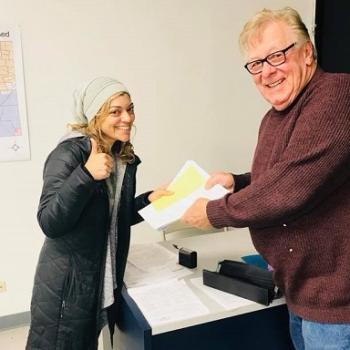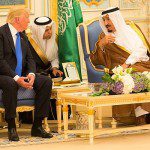 |
|
Saira Wasim’s ‘Genocide’
|
While Islamic art has historically been a rich and varied practice that was encouraged and celebrated throughout the Muslim world, the form has been stifled and discouraged in recent times, especially when it comes to open artistic and political expression. As a result, few Muslim artists have been noticed outside their communities or countries, and even fewer non-Muslims have seen compelling examples of contemporary art from the Muslim world. However, the work of New York based Pakistani artist Saira Wasim is proving to be an exception.
Her work has been described by the New York Times as “exquisite political cartoons that conjure William Hogarth and sometimes borrow directly from Norman Rockwell.” Art historian Anna Sloan has said about Wasim that the “contradictions of scale intrinsic to her epic miniatures serve us well in a time of need, bearing witness to tragedies both personal and Dantean in scope.”
Wasim’s works are part of a current exhibit at the Asia Society in New York called “One Way or Another: Asian American Art Now“, which “brings together seventeen artists from across the country who challenge and extend the category of Asian American art. The title of the exhibition, inspired by the 1970s Blondie hit, suggests that there has never been a formulaic way of making or seeing art, either back then or now. Instead, these artists initiate a new set of conversations that highlight the multidimensional ways of conceptualizing and producing art today.”
Wasim work both embraces and bends convention by invoking the genre of Mughal miniatures. “She returns,” writes Newsweek, “consciously to the tradition of classical Mughal miniature painting. But instead of the hunting, battles and royal entertainments those works depicted, she chooses as her subjects Bush and Blair, Cheney and Rumsfeld, the Iraq war.”
Zahir Janhomamed, associate editor of alt.muslim, recently interviewed Wasim to ask her about the imagery and inspiration for her paintings and about the place of the artist within the Muslim community.
![]() What particularly draws you to using themes of Mughal miniatures?
What particularly draws you to using themes of Mughal miniatures?
I got my bachelor degree in Miniature paintingfrom the National College of Arts in Lahore, Pakistan. It is worth mentioning that this institute teaches many things to its students, including the importance to locate oneself, our identity in the Indian subcontinent, and examine our role in a global context, especially after 9/11.
I took on miniature painting because I felt more comfortable expressing myself in this discipline. I prefer to express myself using a Mughal style because its strongly narrative and it relates to our own cultural behavior/context within South Asia. Its reflects the South Asian theme of telling stories not only orally, but visually, too. So the medium leaves a lot of room to express oneself. If we are talking about political art, then Mughal arena is the best medium to use.
What’s interesting is that each Mughal emperor used this art form for their own political propaganda to glorify their deeds or reign. Sometimes it’s very much similar to what certain governments (or channels/newspapers) do with the media, using them for their own political reasons.
![]() In one of your works, you depict Pakistan President General Musharraf riding a merry go round wearing slippers. In another, you show him with Shiva like arms. In another, he is wearing a clown-like costume. Can you explain your use of this imagery? What does it suggest about Musharraf?
In one of your works, you depict Pakistan President General Musharraf riding a merry go round wearing slippers. In another, you show him with Shiva like arms. In another, he is wearing a clown-like costume. Can you explain your use of this imagery? What does it suggest about Musharraf?
It’s not something personal about Musharraf. I have a deep respect for him, as he is the president of my country, Pakistan.
But I love to listen to how an ordinary man who has no role in government or policy perceives politics. In fact, most of my political works are derived by hearing discussions of common people on politics.
As for this particular piece, “Marry Go Round,” the carousel represents the basic constitutional structure of Pakistan, which is a strong, military regime. The carousal is something that keeps moving and it represents how Pakistan has never able to escape from this ever repeating cycle of military rule.
The idea behind the slippers is to show the irony within Pakistan. Although Pakistan is a nuclear state, its national debt is over forty billion dollars, with annual spending on defense at over $3.5 billion a year. So these slippers show that despite all this, Pakistan is still a poor state with its leaders spending exuberantly and living in luxury
 |
|
Another great thing about miniature painting is this that it allows the artist to access certain tools, symbols, and vocabulary, which have roots in South Asia history.
For example, some sacred animals and imaginary symbols (like the loin, goat, halo behind the emperor, or symbol of Shiva) are all symbols found within South Asia.
In the piece, “Buzkashi” (goat-grabbing), the painting depicts the “One Man Show” of the military dictator of Pakistan, Pervez Musharaf, sitting on a presidential throne with his imperialism shown with four arms, like the Hindu god Shiva.
The basic constitutional structure of the country evolving around his regime with army generals are celebrating ‘martial law’ by dancing and wearing Hawaiian sandals. Here the goat symbolizes an innocent public.
As for the imagery of clowns, I never painted Musharraf as a clown but in an environment of clowns. In “Friendship of India and Pakistan-Agra Declaration” Musharraf and former Indian Prime Minister Vajpayee are shown as entertainers but still in military uniform. In fact, I think I have always painted Musharraf in a military uniform, with some paintings showing him with a tiger skin, which represents the extreme power of the military dictatorship in Pakistan.
It’s less a statement about Musharraf than it is about the political structure of Pakistan, which seems to be trapped in this carousel-like repetition of history.
![]() How has your work been received in Pakistan? In the US? Have you had much support – if at all – from the Muslim community for your work?
How has your work been received in Pakistan? In the US? Have you had much support – if at all – from the Muslim community for your work?
There has always been a misunderstood response from both American and Pakistani audiences. But I take criticism positively because itmakes my work grow.
As for the Muslim community, I don’t know. As I mentioned, the work is often misunderstood. Sometimes when people don’t understand what the actual picture is conveying, it leads to a negative response.
![]() One of my favorite works of yours is the piece “Lamentation of the Innocence (Genocide)“. Can you describe the imagery in this piece?
One of my favorite works of yours is the piece “Lamentation of the Innocence (Genocide)“. Can you describe the imagery in this piece?
The idea was taken from the ubiquitous persecution and crime against humanity.
It features figures lay in a huddle mound; animals intertwined with humans all are caught together in a net of death. It offers a simple picture of senseless slaughter of innocence.
![]() What do you think the importance is of art that engages contemporary issues? After the recent cartoon crisis, do you find increased challenges in using art as a vehicle to comment on political affairs that affect Muslims?
What do you think the importance is of art that engages contemporary issues? After the recent cartoon crisis, do you find increased challenges in using art as a vehicle to comment on political affairs that affect Muslims?
Art has always been used as an important vehicle for cultural expression throughout the ages. Much has been said through art about social issues. Likewise, it has also been used as political propaganda of the state because history tells us that artist has always been under a strong state intrusion. I believe that the freedom that is granted artists should be used positively to wake people up against ignorance, to engage people in a certain dialogue for the betterment of humanity. This is what I intend to do through with these tiny paintings.
But unfortunately, there has often been a denial and a very strong condemnation against artistic values and creativity in many Islamic sates. But I believe art and freedom of expression can be used to propagate Islam and create awareness in society. Of course, there is always a limit or a certain boundary, though, from where the artist shouldn’t proceed. Prophets and sacred figures of all religions should be excluded from this critical depiction.
If we look at the cartoons in the newspaper Jylland-Posten with a critical eye, they neither had any aesthetic or artistic appeal or any truth about the Prophet Muhammad (peace be upon him). It was just an attempt to insult our Prophet and to hurt Muslims’ feelings all over the world.
Recently, I did a painting on the Danish cartoon controversy called “Ignorance is Bliss“. It portrays prejudice of the west towards the Muslim world, and vice versa.
Unfortunately Muslims all over the world didn’t respond to the Danish cartoons according to the teaching of Islam or the way Prophet Muhammad (peace be upon him) taught us. By those furious riots, we gave the enemies of Islam further opportunities to mock the teachings of Islam. It’s my humble plea to Muslims to unite and answer such ridiculous judgments and criticism against Islam and our Prophet Muhammad (pbuh) peacefully, with reason and logic.
We need to believe in jihad with the pen and brush, not missiles or violence.
Zahir Janmohamed is the co-founder of The Qunoot Foundation and associate editor of altmuslim.com.











